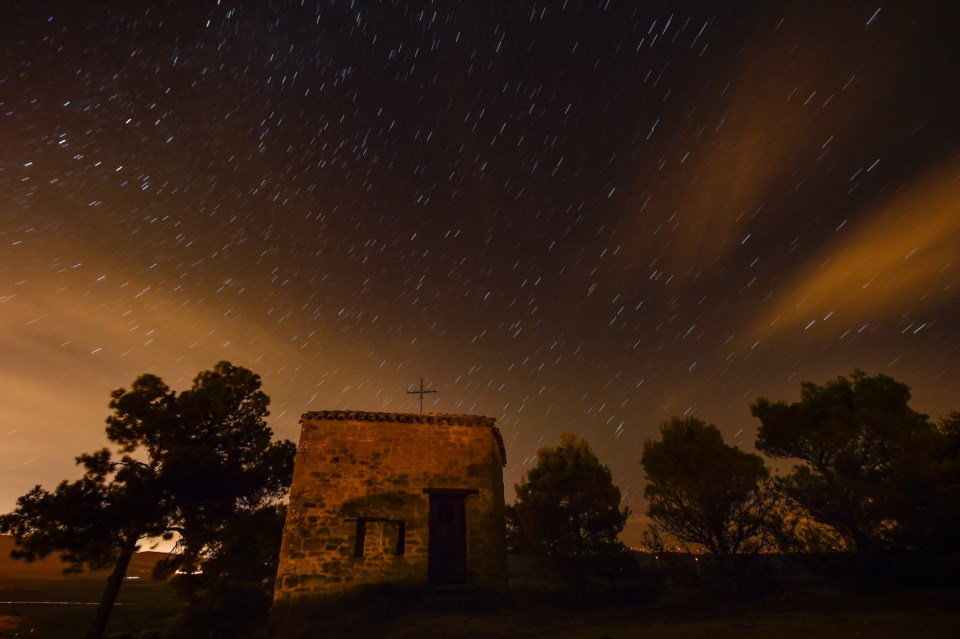The Perseid meteor shower maximum is almost upon us and it’s getting a boost from the new moon.
The new moon, which is a phase when the moon is a slender crescent or not visible at all, means a darker sky for better viewing.
“It should be good here because we’re close to a new moon, so the moon won’t have much of a presence in the sky on the nights when the shower is visible,” said Chris Gainor, the Victoria-based vice-president of the Royal Astronomical Society of Canada.
The last time the Perseids peaked at the same time as the new moon was in 2007.
The annual August meteor shower is one of the most prolific natural light shows of the year. About 60 shooting stars are expected to streak across the sky per hour at its peak tonight.
The best viewing spot is in Asia, Gainor said, since the shower will peak during Victoria’s daylight hours. But on Vancouver Island, he recommended finding a dark spot to watch the show after midnight tonight and Thursday night. The weather forecast calls for clear skies.
The Perseid meteor shower gets its name from Perseus, a constellation near the better-known Cassiopeia, which can be identified by its W shape. During the shower, the meteors will appear to spring from the direction of Perseus, Gainor said.
He warned that although about one meteor is expected per minute, some will be too small to see. “Meteor showers usually tend to be kind of a more subtle thing than perhaps people expect.”
The Perseids come to us courtesy Comet Swift-Tuttle, which makes a complete orbit around the sun once every 133 years. As the comet flies through space, it sheds bits of material from its nucleus. Over time, its orbit has turned into a ring of dusty debris.
Each August the Earth’s orbit takes it through a small section of this ring, causing stray bits of comet dust to hit our atmosphere at 60 kilometres a second.
Most of these cometary particles are about the size of a grain of sand, but the force of their impact heats up the air around them enough to make streaks of light shoot across the sky. Most of these streaks will last for less than a second, but a few of the brighter ones will leave trails of vaporized gases and glowing air molecules that could take up to a few seconds to fade, according to the Royal Astronomical Society.
This year, the first Perseid meteors could be seen at the end of July, and they will continue to bombard Earth through Aug. 26, according to NASA. However, the Earth goes through the most dense part of the stream early on Thursday morning, which makes this the prime time for viewing.
The best way to see the meteor shower is to get as far away from city lights as possible.
Once you find a dark place, give your eyes at least 20 minutes to adjust to the dark. Avoid looking at cellphones or using flashlights while you are watching for meteors, it will ruin your night vision. If you do need light, consider using a red light.
Don’t bother with a telescope or binoculars, as it will only limit your view of the sky. And if you are wondering where to look, the answer is anywhere.
“People ask me what direction to look and the answer is ‘up,’ ” said Alan MacRobert, senior editor at Sky and Telescope. “Keep your eyes on whatever part of the sky is darkest — probably overhead.”
The height of the shower takes place between 3 a.m. and dawn Pacific time, but it is possible to see Perseids as early as 10:30 p.m., said Bill Cooke, head of NASA’s Meteoroid Environment Office. The shower will keep getting better as the night goes on.
As you are watching, you might keep in mind that the people of Earth have been enjoying these late summer fireworks for centuries.
“Back in the medieval times the Perseids were called the tears of St. Lawrence because they are seen around the anniversary of the saint’s martyrdom — so that dates them,” MacRobert said.



